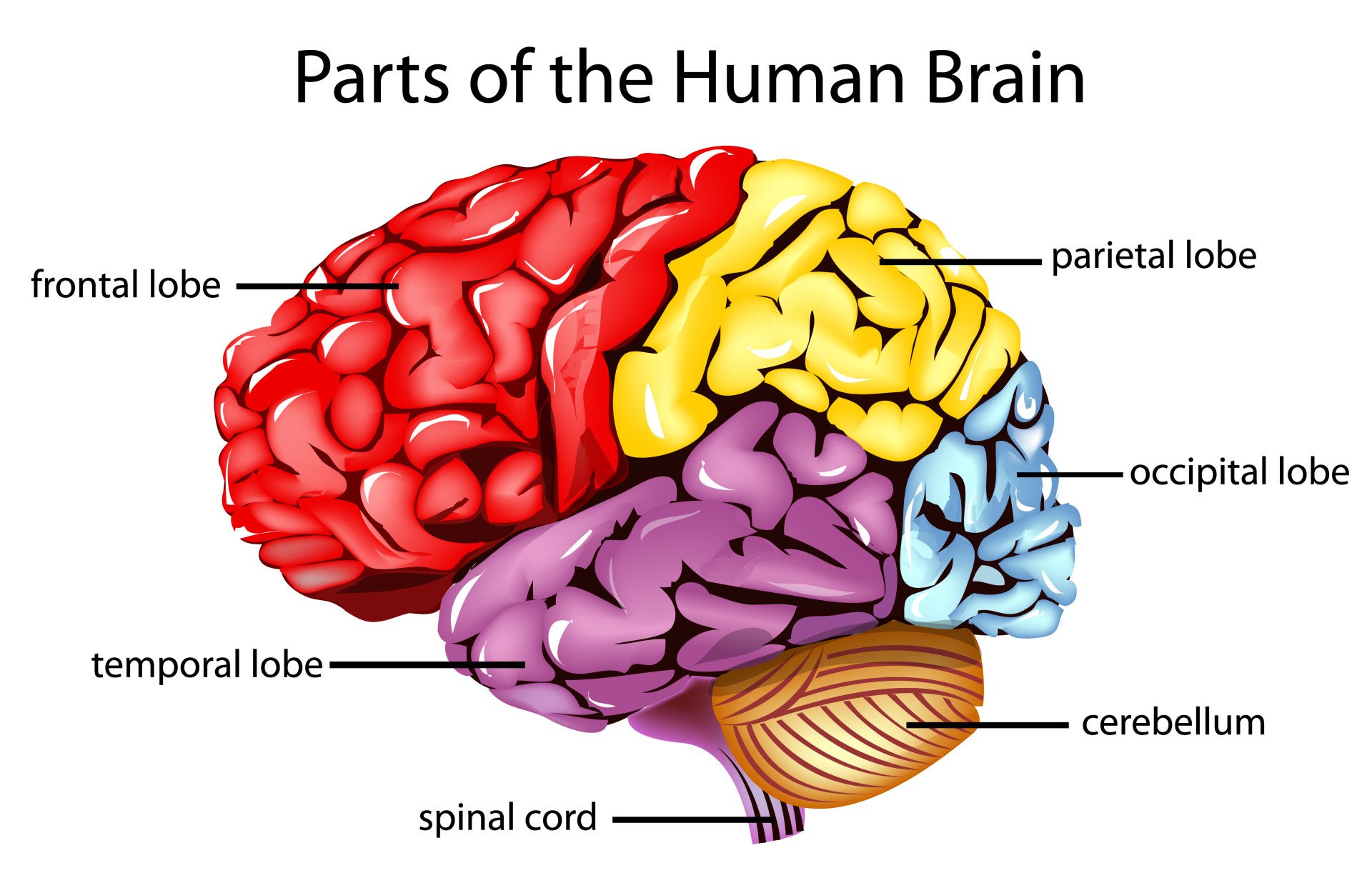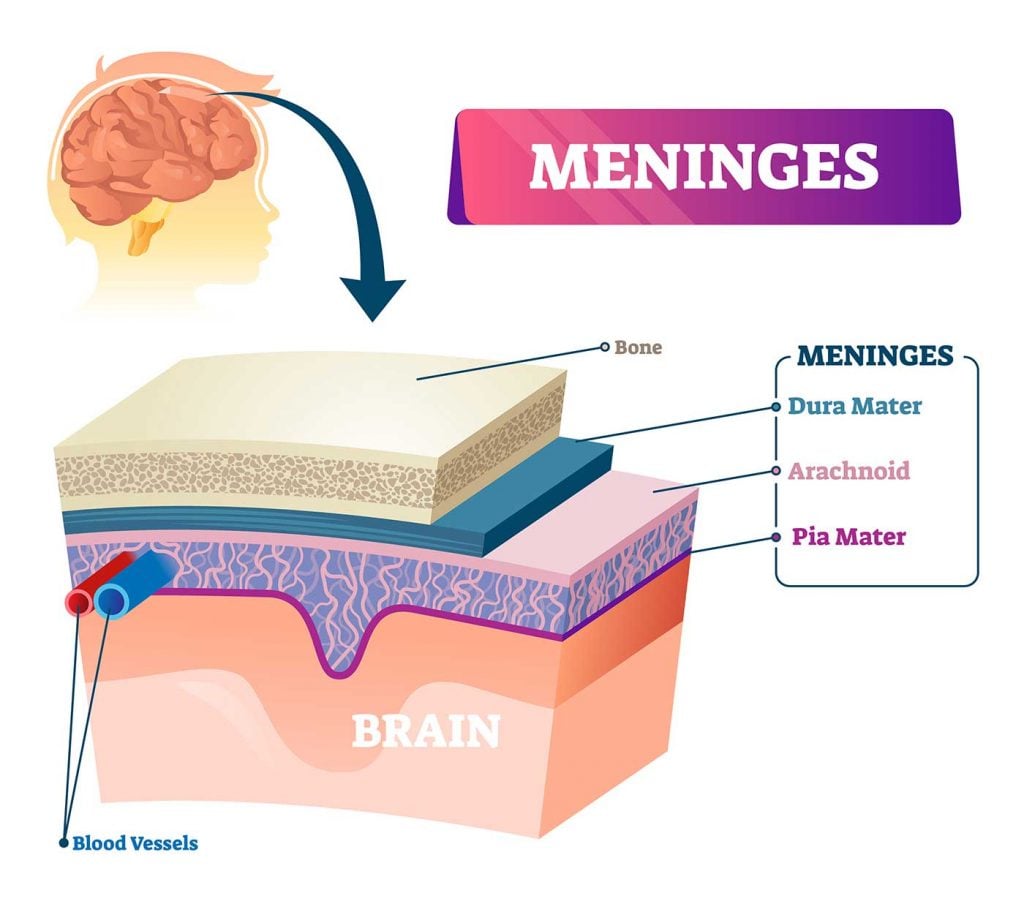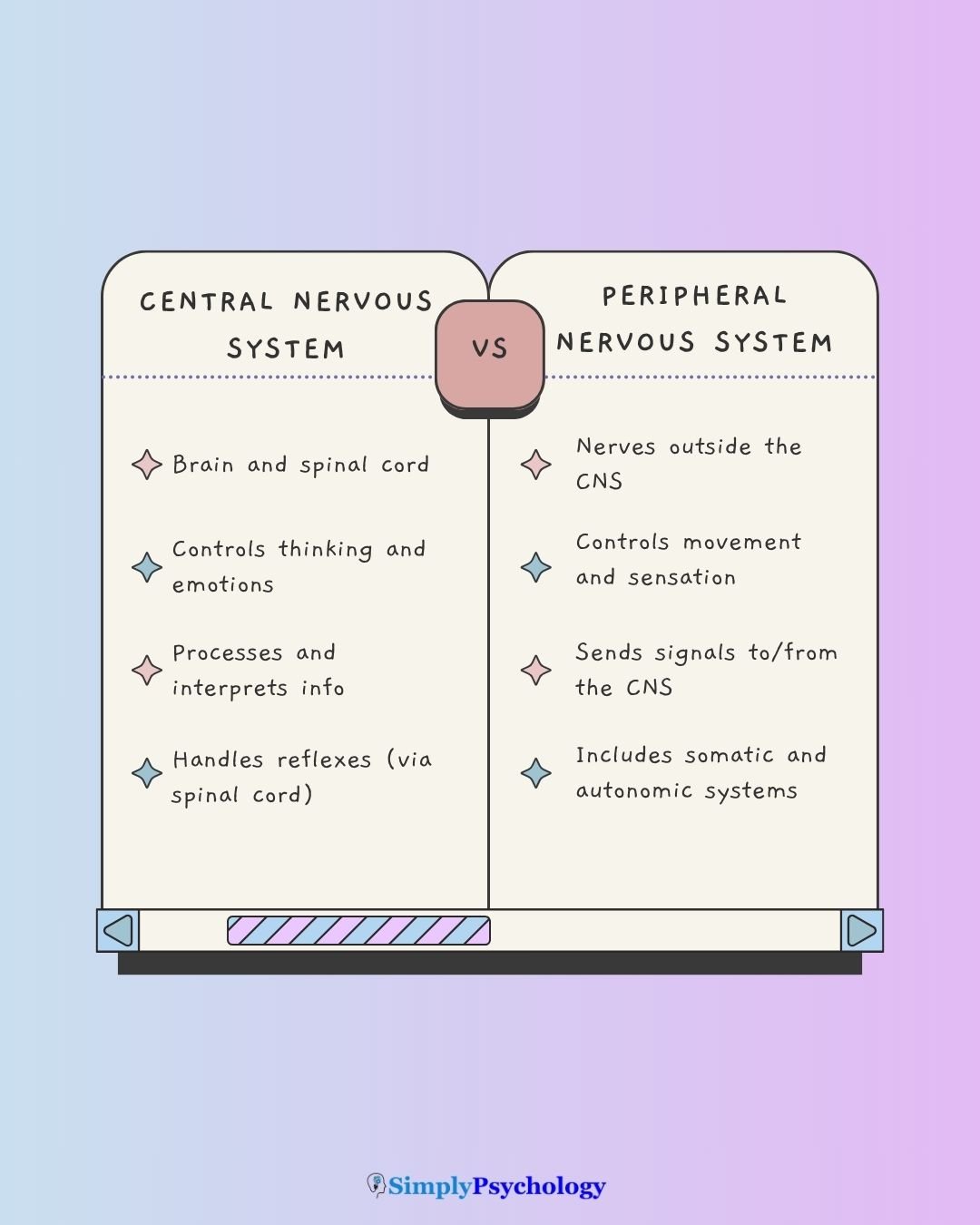The central nervous system (CNS) is the body’s command center. It includes the brain and spinal cord, which work together to control movement, sensation, thought, and emotion.
By processing information from the senses, the CNS coordinates everything from voluntary actions like walking to automatic functions like breathing and heartbeat.

Key Takeaways
- The central nervous system (CNS), made up of the brain and spinal cord, is the body’s control center for movement, sensation, thought, and emotion.
- It processes information from the senses and coordinates both voluntary actions (like walking) and involuntary functions (like breathing).
- The CNS includes key structures such as the cerebrum, cerebellum, brainstem, and spinal cord, all working together through complex neural networks.
- Disorders like Alzheimer’s, multiple sclerosis, and stroke can seriously impact CNS functioning and overall quality of life.
Without the CNS, we wouldn’t be able to think, feel, or respond to the world. It connects our mental and physical experiences—making it essential not just for survival, but for how we experience life.
Core Functions of the CNS
At its core, the CNS has two main responsibilities:
- Controlling behavior – from reflexes to decision-making.
- Regulating physiological processes – like heart rate, digestion, and hormone release.
To do this, the brain needs constant input from the body’s sensory receptors. It receives and sends these signals through the spinal cord, a vital communication highway.
The term central reflects both its anatomical position and its importance in generating and sustaining behavior.
Below, we discuss the different sections of the central nervous system:
The Brain
The brain is the CNS’s most complex structure. It’s responsible for thinking, memory, movement, and perception. It has three main parts:
- Cerebrum
- Cerebellum
- Brainstem
The Brain Stem
The brain stem is located at the base of the brain and is one of the most primitive regions of the brain; and is made up of the midbrain, pons, and medulla oblongata.
The brain stem functions are correspondingly basic and physiological, including automatic behaviors such as breathing and swallowing.

The Cerebellum
Sitting just above the brainstem, the cerebellum regulates motor activity, balance, and posture. It helps fine-tune movements, especially those we perform automatically, like walking or catching a ball.
In some animals, like amphibians, the brain consists mainly of the brainstem and cerebellum.
The Cerebrum
The cerebrum is the brain’s largest and most recently evolved area, making up about 85% of its mass.
Divided into two hemispheres, it supports higher-level functions including speech, voluntary movement, and problem-solving.
Each hemisphere controls the opposite side of the body.
Within the cerebral hemispheres, there are four areas, or lobes, that each serve different functions:
- Frontal lobes – these are positioned at the forefront of the brain and are responsible for higher cognitive functioning, language development, attention, decision-making, and problem-solving.
- Occipital lobes – positioned at the back of the brain, these lobes are responsible for processing and encoding different visual information such as color, orientation, and motion.
- Parietal lobes – situated at the top of the brain, are responsible for processing sensory information, attentional awareness, visuospatial processing, and integrating somatosensory information (e.g., touch, temperature, and pain).
- Temporal lobes – located just behind the ears, the temporal lobes are responsible for the recognition, perception (hearing, vision, smell), understanding of language, and forming memories.
The Cerebral Cortex: Thinking Surface
The surface of the cerebrum is called the cerebral cortex, also known as grey matter. It’s a 3mm-thick layer packed with billions of neurons.
This is where memories are stored, sensory data is interpreted, and thinking occurs. The folds and grooves (called gyri and sulci) increase the cortex’s surface area, allowing for more complex neural networks.
White Matter and Connectivity
Beneath the cortex lies white matter—bundles of nerve fibers that connect different brain regions and speed up communication using myelin insulation.

Spinal Cord
The spinal cord is a long, thin collection of neurons attached to the base of the brain (brain stem), running the length of the spinal column.
The spinal cord contains circuits of neurons that can control some of our simple reflexes, such as moving a hand away from a hot surface without participation from the brain.

Segments of the Spinal Cord
The spinal cord is divided into 30 segments, each serving a specific body area:
- Cervical – These are 8 segments that transmit signals from or to areas of the head, neck, shoulders, arms, and hands.
- Thoracic – These are 12 segments that transmit signals from or to areas of the arms, chest, and abdominal areas.
- Lumbar – These are 5 segments that transmit signals from or to areas of the legs, feet, and some pelvic organs.
- Sacral – These are 5 segments that transmit signals from or to areas of the lower back, pelvic organs, genital areas, and some areas of the legs and feet.
- Coccyx – which is the base of the spinal cord.

How the CNS Communicates with the Body
The CNS communicates with the rest of the body through the nerves, which are bundles of fibers that transmit signals to and from the CNS.
The nerves that are attached to the spinal cord make up the peripheral nervous system (PNS).
The nerve roots exit the spinal cord and travel to both sides of the body, carrying messages back and forth between the brain and the peripheral nerves.
The middle structure of the spinal cord is made up of grey matter, and the external tissues are made of white matter.
Nerve and Glial Cells
Neurons
The CNS contains about 86 billion neurons, each designed to transmit electrical signals. Neurons have three main parts:
- Dendrites (receive signals)
- Cell body (soma) (processes information)
- Axon (sends signals)
Glial Cells
Although glial cells don’t send signals themselves, they are vital for maintaining brain health. They outnumber neurons about 9 to 1. Key types include:
- Astrocytes: Supply nutrients, clean up toxins, and support neuron survival.
- Microglia: Act as the CNS’s immune system, cleaning up waste and protecting against infection.
- Oligodendrocytes: Produce myelin, a fatty sheath that wraps around axons to speed up signal transmission

How the central nervous system is protected
As the central nervous system is vital for a variety of functions, as well as survival, it is exceptionally well protected. A skull encases the brain, and the spinal cord runs through the middle of a column of hollow bones known as vertebrae.
The brain and the spinal cord are also protected by a three-layered set of membranes called the meninges (the layers specifically called pia mater, arachnoid, and dura mater).

To ensure the brain and the spinal cord do not come into direct contact with any bones of the skull or vertebrae, they float in a clear liquid called cerebrospinal fluid.
The cerebrospinal fluid fills the space between the two meninges, as well as circulates within the ventricles of the CNS, providing a surrounding cushion to the brain and spinal cord, protecting them from damage.
Disorders and damage associated with the central nervous system
The central nervous system (CNS) is vital to nearly every bodily function — from movement and sensation to memory and emotion. When damaged, the effects can be severe and life-altering.
Some types of disorders and damage to the CNS include:
- Neurodegenerative disorders: these involve the progressive loss of structure of function of neurons and can include Alzheimer’s Disease, Parkinson’s Disease, and Multiple Sclerosis.
- Developmental disorders: these are present from birth or develop during early life and can include cerebral palsy and autism.
- Traumatic injuries: these are physical injuries that can have lasting effects on the CNS such as traumatic brain injury and spinal cord injury.
- Inflammatory and infectious conditions: these can disrupt neural communication and cause acute or chronic systems, such as meningitis (inflammation of the membranes around the CNS), and encephalitis (brain inflammation, causing confusion, fever, or seizures).
Protecting the central nervous system
Although many CNS disorders, like Alzheimer’s or multiple sclerosis, may not have a cure, there are ways to reduce risks and support long-term brain and spinal cord health.
Simple Ways to Protect Your CNS:
- Wear safety gear to prevent head and spine injuries during sports, cycling, or driving.
- Stay active—both mentally and physically—to support brain function and circulation.
- Eat a brain-healthy diet, rich in omega-3s, fruits, and vegetables.
- Limit alcohol and avoid harmful substances, which can damage nerve tissue.
- Manage blood pressure and cholesterol to lower the risk of stroke.
- Stay up to date on vaccinations to help prevent infections like meningitis.
Taking care of your nervous system doesn’t mean you can prevent all conditions—but it can help protect what matters most: your ability to move, think, and live independently.
References
Brodal, P. (2004). The central nervous system: structure and function. oxford university Press.
Noback, C. R., Ruggiero, D. A., Strominger, N. L., & Demarest, R. J. (Eds.). (2005). The human nervous system: structure and function (No. 744). Springer Science & Business Media.



